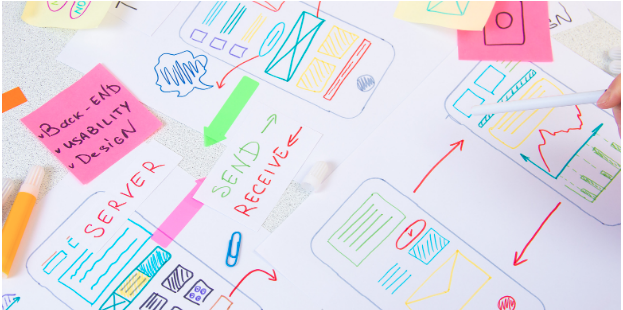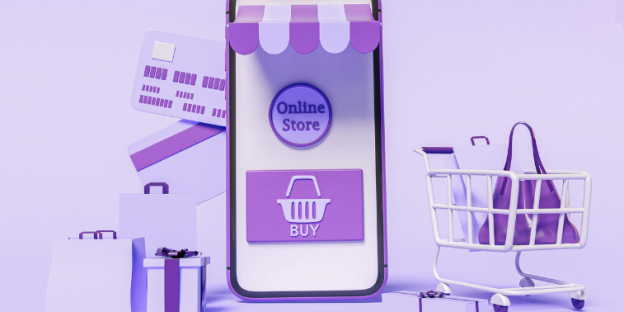Rules for Mobile App Navigation Design that cannot be overlooked

Steve Jobs has rightly said, “Design is not just what it looks like & feels like. Design is how it works.” The navigation design of your mobile app is how you talk to your audience. Make it too complex and you get the user scratching their head. Make it too dull and you get the user yawning. Either way, you lose them. Therefore you have to make sure that it is the perfect balance between aesthetically pleasing and easily usable.
So how to do the same? How to find the perfect combination of navigation designs for your app that keeps your user hooked with ease? Well, hiring the best UX designer is one way but since we are talking about design here, some navigation rules cannot be overlooked. No matter how unique your outline or idea for the design is, these rules should always be kept in mind in the course of the process.
But before getting to that, let’s first understand what characteristics your app navigation design should constitute.
Simple
Need I say more? Throughout the process of UX development, your main focus should be simplicity. Now, it does not mean your design becomes boring. It just means it is easy to understand, access, and everything is out there which leads us to our next point.
Easily Seen
The features and functionalities should not be hidden under ten dropdowns. As already mentioned, they should be out there. And if your app has many functions, don’t put them too deep inside. Try to keep as much on the screen as possible without cluttering it. Take Amazon for example. Despite having more than 606 million products and adding 1.3 million products every day, it neatly manages to distribute every section along with keeping them visible.
Clear
If the user wants to navigate from point 1 to point 2, they should be easily able to do so. They need not memorize it to be able to do it every time. One glance should be enough. A good app navigation design does not need to guide the user, and a good mobile app development company always makes sure of that.
Uniform
Whether the app is being used on a mobile phone or a tablet, the layout should be consistent on every screen. Regardless of the size, the model, or any change in the device, the design should not necessarily change. Again, they should not have to be guided rather recognize it.
Now that the properties have been discussed, let’s dive into the subject of navigation rules you should not avoid.
Thumb rule navigation
According to a study by Steven Hoober, 49% of people use only thumbs for navigation.
As visible in the picture above, the area to the bottom of the screen is most naturally used, and one need not stretch too much of their hand. Stretching increases as you make your way up the screen. Even when a person is using both of their hands, most of the fingers are used in maintaining the grip on the device, and in this case, both the thumbs are used. This rule can make your designing process a lot smoother since now you know where to place what on the screen.
Bars
This is less of a rule and more of a suggestion. It makes the most sense to use bars if your app has a limited set of features. Not only does it make the navigation easy as the user can quickly switch between different views, but it also keeps all the essential elements visible on the screen. That being said, there are mainly two locations to place these bars: top and bottom. As for which one to choose, it depends on what suits the context of your app the most.
However, there are certain guidelines to be followed when designing this for your app.
-> Make sure you only choose to show the important and frequently visited destination on the screen. Putting too many elements on the bar makes it difficult to switch and putting only a few elements is a waste of space.
-> Work on the icons on the bar. Using different colored icons can be a turn-off as it does not maintain consistency. Avoid using text labels on the icons. They should speak for themselves. For instance, a home icon is enough to know it’s for the home page, you don’t have to incorporate the text. Also, make sure your icons aren’t too large or too small.
-> Highlight the current location. As we mentioned, an app navigation design is how you talk to the user. Communicate their current location with them on the bar too.
Avoid Clutter
This point cannot be stressed enough. Do not make your UX design messy. It complicates the app, perplexes the user, and decreases engagement. Stuffing everything on the screen is not the way to go. Instead, keep things simple and clean. Clutter goes against all the properties your app navigation design should have which were discussed above.
Search Box
No matter what your app is based on, a search box could be used in every idea. Besides, an app with a magnifying glass makes it look like the user is lost. It is also a simple way to make the feature sets within the app easily accessible. You do not need to keep everything on the screen which automatically makes the design much cleaner.
It is only fitting that we also discuss some of the frequently used app navigation designs.
Full-Screen Navigation
One of the misconceptions about this design is that it clutters the screen. However, it can work quite the opposite for some app ideas. Say you have an educational app that has blog posts about various subjects. Placing them all on the screen makes it difficult to read. Moreover, it can be quite scary.
Splitting the different sections all over the screen can make your app more engaging.
Hamburger Menu
Some people argue that this navigation design should not be used. I beg to differ. Albeit, they do have a point because this menu can go unnoticed sometimes by the user. But if your app has a lot of functionality, this can be a clean way to wrap them all together in one place.
Besides, how the bar slides in and out smoothly when you tap on the three lines on the top always makes for good UI.
Navigation is how your user interacts with your app. This is how they go from one feature or view to another. Therefore, tailor your design in such a way that it caters to the needs of your audience and matches their personality well. User experience heavily depends on how well the navigation is. App navigation design is a conversation between the user and the app. Make it worth it.
Popular Post: How The Navigation Bar Design Can Change The Fate Of Your Ecommerce Business?
How to Develop an Indoor Navigation Mobile Application?
How to Create a GPS APP for Android & iOS




